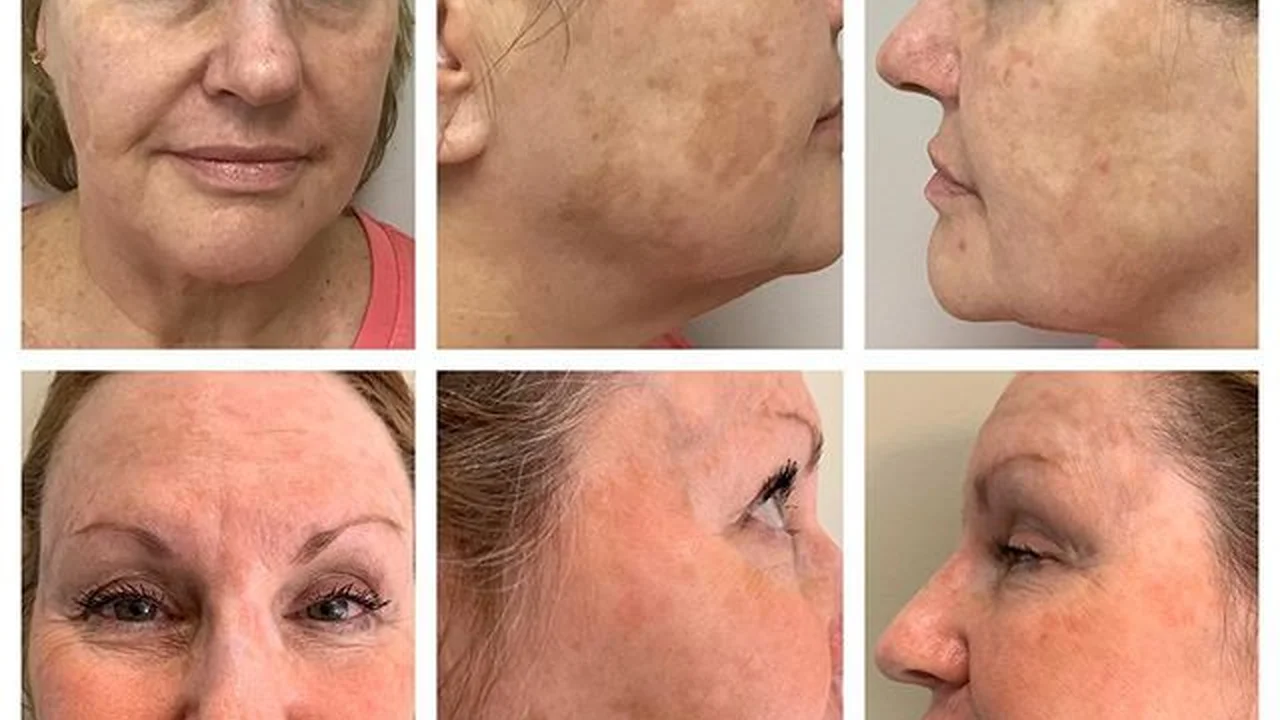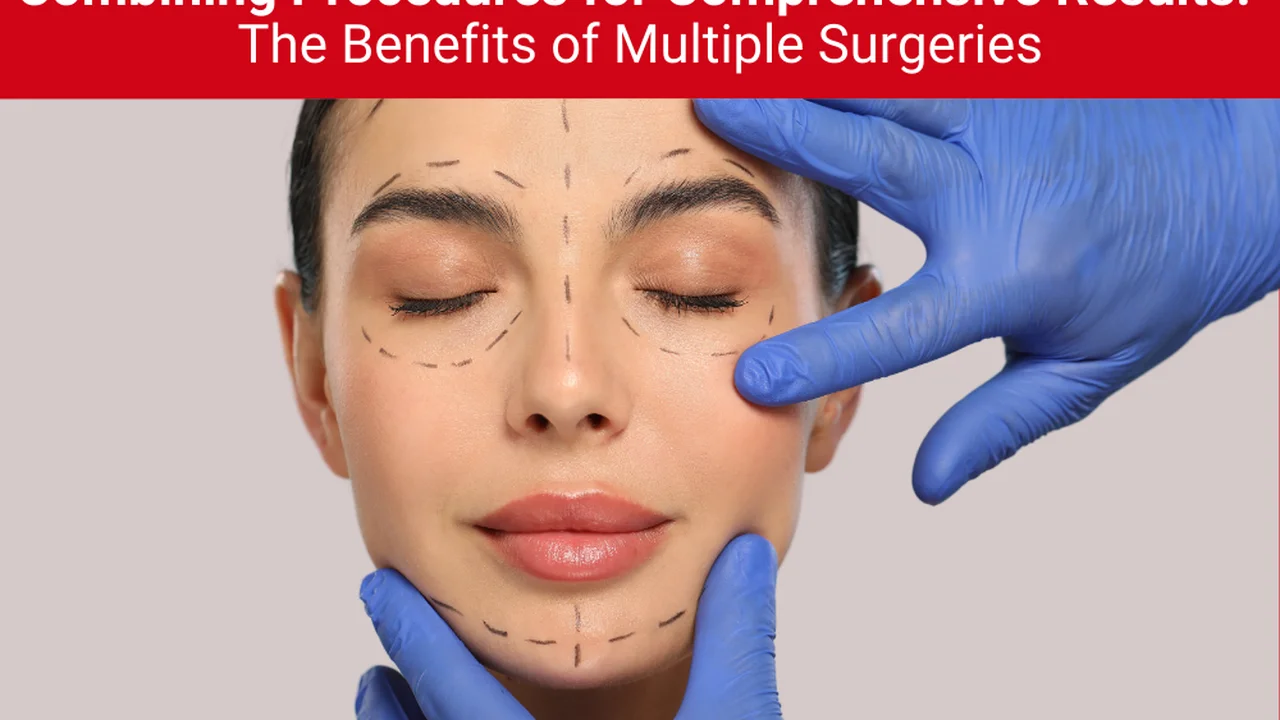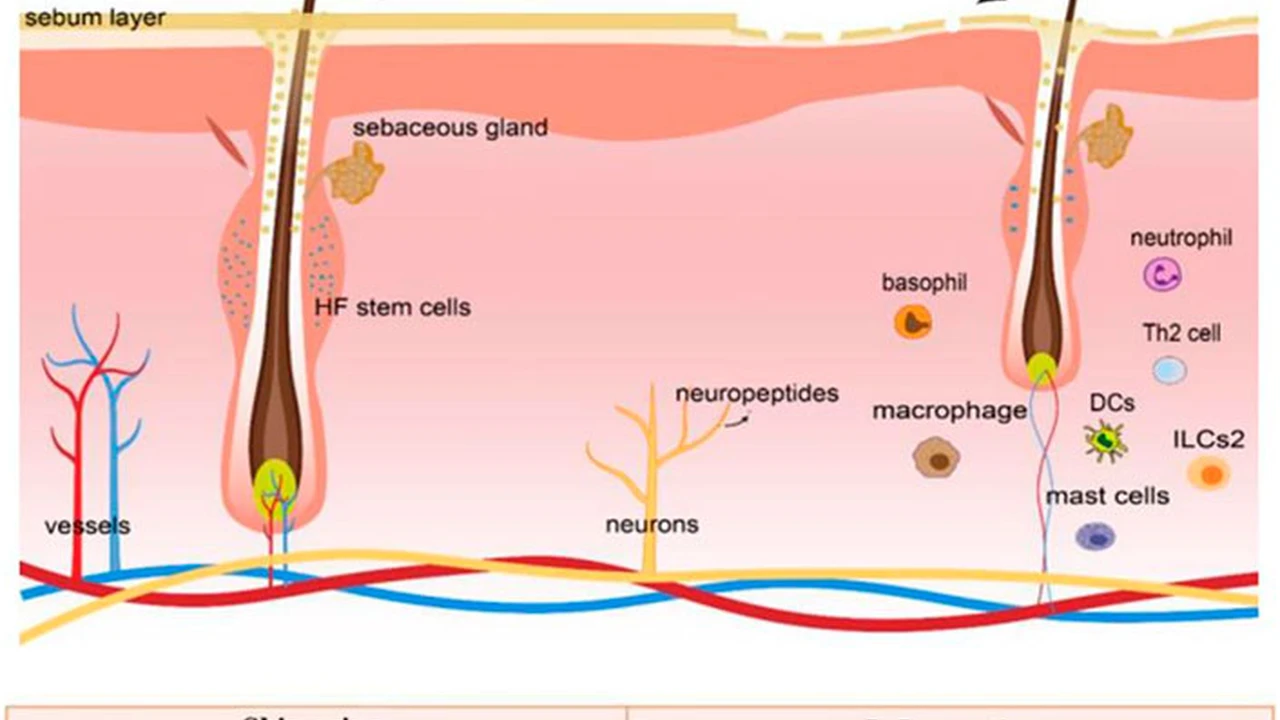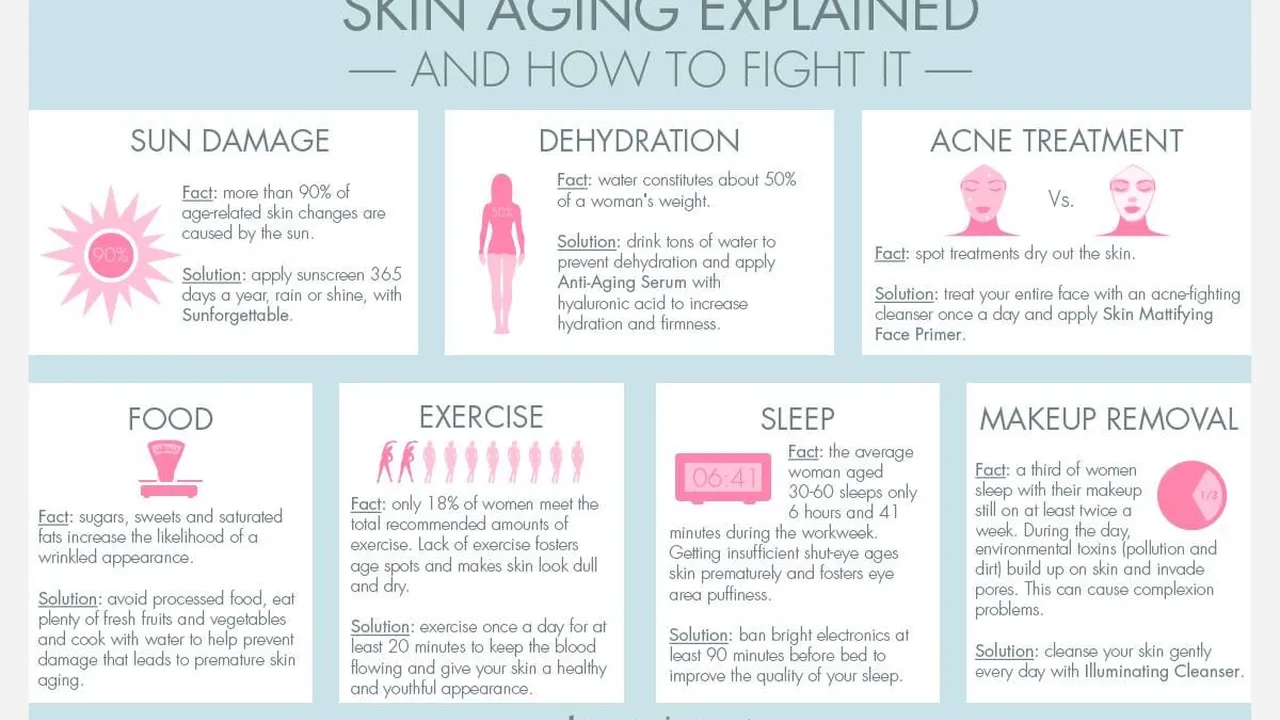Comparing Botox vs. Dermal Fillers for Wrinkles

for non-invasive facial rejuvenation techniques.
Understanding Non Invasive Facial Rejuvenation A Comprehensive Overview
Let's dive into the world of non-invasive facial rejuvenation. What exactly does it entail? Essentially, it's about turning back the clock – or at least hitting the pause button – on the visible signs of aging without resorting to surgery. Think less downtime, fewer risks, and a more natural-looking result. This approach focuses on stimulating the body's own healing mechanisms and using advanced technologies to improve skin texture, tone, and overall appearance.
We're talking about a range of treatments, from lasers and light therapies to injectables and energy-based procedures. Each targets specific concerns like wrinkles, fine lines, sun damage, and loss of elasticity. The beauty of non-invasive methods lies in their versatility. They can be tailored to individual needs and preferences, making them a popular choice for those seeking a subtle yet effective rejuvenation.
The Science Behind Youthful Skin and Aging
Before we delve into the specifics of each treatment, let's understand what happens to our skin as we age. Several factors contribute to the visible changes we see, including:
- Collagen and Elastin Loss: These proteins are the building blocks of our skin, providing structure and elasticity. As we age, their production slows down, leading to wrinkles and sagging.
- Reduced Hyaluronic Acid: This molecule is a natural humectant, attracting and retaining moisture in the skin. Its decline results in dryness and a loss of plumpness.
- Sun Damage: Prolonged exposure to UV radiation damages collagen and elastin fibers, causing premature aging, wrinkles, and sunspots.
- Cell Turnover Slowdown: The rate at which our skin cells regenerate decreases with age, leading to a dull and uneven complexion.
- Muscle Weakness: Facial muscles weaken over time, contributing to sagging and the formation of wrinkles.
Understanding these processes is crucial for choosing the right non-invasive treatment to address specific concerns. By targeting these underlying factors, we can effectively rejuvenate the skin and achieve a more youthful appearance.
Laser Resurfacing for Skin Rejuvenation and Enhanced Texture
Laser resurfacing is a powerful tool for improving skin texture, reducing wrinkles, and minimizing the appearance of scars and blemishes. It works by delivering focused beams of light to the skin, removing the outer layers and stimulating collagen production. There are several types of laser resurfacing treatments available, each with its own benefits and drawbacks.
Fractional Laser Resurfacing A Popular Choice for Targeted Treatment
Fractional laser resurfacing is a popular option that treats only a fraction of the skin at a time, leaving the surrounding tissue intact. This allows for faster healing and reduced downtime compared to traditional ablative lasers. It's effective for treating fine lines, wrinkles, sun damage, and acne scars. Popular fractional laser options include Fraxel and CO2RE.
Example Product: Fraxel Dual Laser System
The Fraxel Dual Laser System is a widely used fractional laser that offers two different wavelengths to target various skin concerns. The 1550nm wavelength is ideal for treating wrinkles and fine lines, while the 1927nm wavelength is effective for addressing pigmentation and sun damage. The treatment involves minimal downtime and can significantly improve skin texture and tone.
Use Case: A 45-year-old woman with fine lines around her eyes and sunspots on her cheeks undergoes a series of Fraxel Dual treatments. After three sessions, she notices a significant improvement in her skin texture, a reduction in wrinkles, and a fading of sunspots. She experiences minimal downtime and is pleased with the natural-looking results.
Ablative Laser Resurfacing For Deeper Wrinkles and Scarring
Ablative laser resurfacing, such as CO2 laser, removes the entire outer layer of skin, providing more dramatic results but also requiring longer downtime. It's best suited for treating deep wrinkles, severe sun damage, and significant scarring. While the results are impressive, the recovery process can be more challenging, involving redness, swelling, and crusting.
Example Product: Lumenis UltraPulse CO2 Laser
The Lumenis UltraPulse CO2 Laser is a powerful ablative laser that delivers precise energy to the skin, allowing for controlled removal of damaged tissue. It's effective for treating deep wrinkles, acne scars, and other skin imperfections. However, the treatment requires careful pre- and post-care to minimize the risk of complications and ensure optimal healing.
Use Case: A 60-year-old man with deep wrinkles and acne scars undergoes CO2 laser resurfacing. He experiences significant redness and swelling for several days after the treatment. However, after several weeks of healing, he notices a dramatic improvement in his skin texture, a reduction in wrinkles, and a fading of acne scars. He is very pleased with the results, despite the longer recovery period.
Non Ablative Laser Resurfacing A Gentler Approach to Rejuvenation
Non-ablative laser resurfacing, such as pulsed dye laser and Nd:YAG laser, heats the skin without removing the outer layer, stimulating collagen production and improving skin tone. It's a gentler option with minimal downtime, making it suitable for those with mild to moderate skin concerns. While the results are less dramatic than ablative lasers, they are still noticeable and can be a good option for maintaining skin health.
Example Product: Cutera Excel V Laser System
The Cutera Excel V Laser System is a versatile non-ablative laser that can be used to treat a variety of skin concerns, including redness, broken capillaries, and pigmentation. It delivers gentle energy to the skin, stimulating collagen production and improving skin tone. The treatment involves minimal downtime and can be customized to individual needs.
Use Case: A 35-year-old woman with redness and broken capillaries on her cheeks undergoes a series of Cutera Excel V treatments. After three sessions, she notices a significant reduction in redness and the appearance of broken capillaries. She experiences minimal downtime and is happy with the improved clarity of her skin.
Laser Resurfacing Pricing A Cost Breakdown
The cost of laser resurfacing varies depending on the type of laser used, the area being treated, and the number of sessions required. Fractional laser resurfacing typically costs between $1,000 and $2,000 per session, while ablative laser resurfacing can range from $2,000 to $4,000 per session. Non-ablative laser resurfacing is generally less expensive, costing between $500 and $1,000 per session. It's important to consult with a qualified dermatologist or plastic surgeon to determine the best treatment option and get an accurate cost estimate.
Radiofrequency RF Treatments for Skin Tightening and Collagen Stimulation
Radiofrequency (RF) treatments use energy waves to heat the deeper layers of the skin, stimulating collagen production and tightening the skin. This non-invasive procedure can improve skin laxity, reduce wrinkles, and contour the face and body. RF treatments are generally safe and effective, with minimal downtime.
Monopolar RF Delivering Deep Tissue Heating
Monopolar RF delivers energy to a single electrode, allowing for deep tissue heating and significant collagen stimulation. It's effective for treating skin laxity on the face, neck, and body. However, it may cause some discomfort and requires a grounding pad to be placed on the body.
Example Product: Thermage FLX System
The Thermage FLX System is a popular monopolar RF device that delivers controlled heat to the deep layers of the skin, stimulating collagen production and tightening the skin. It's effective for treating wrinkles, sagging skin, and cellulite. The treatment involves minimal downtime and can provide long-lasting results.
Use Case: A 50-year-old woman with sagging skin on her neck and jawline undergoes a Thermage FLX treatment. She experiences some discomfort during the procedure but tolerates it well. After several months, she notices a significant improvement in her skin tightness and a more defined jawline. She is pleased with the natural-looking results.
Bipolar RF A More Comfortable and Controlled Approach
Bipolar RF delivers energy between two electrodes, providing more controlled heating and reducing the risk of discomfort. It's effective for treating fine lines, wrinkles, and mild skin laxity. Bipolar RF is generally more comfortable than monopolar RF and requires no grounding pad.
Example Product: Venus Freeze System
The Venus Freeze System combines bipolar RF with pulsed electromagnetic fields to deliver energy to the skin, stimulating collagen production and improving skin tone. It's effective for treating fine lines, wrinkles, and cellulite. The treatment is comfortable and involves no downtime.
Use Case: A 40-year-old woman with fine lines around her eyes and mouth undergoes a series of Venus Freeze treatments. She finds the treatment very comfortable and relaxing. After several sessions, she notices a reduction in fine lines and an improvement in her skin texture. She is happy with the subtle yet noticeable results.
Microneedling with Radiofrequency Combining Two Powerful Techniques
Microneedling with RF combines the benefits of microneedling and radiofrequency energy. Microneedles create tiny channels in the skin, allowing RF energy to penetrate deeper and stimulate collagen production more effectively. This combination treatment can improve skin texture, reduce wrinkles, and minimize the appearance of scars.
Example Product: Morpheus8 System
The Morpheus8 System is a popular microneedling with RF device that delivers controlled energy to the deep layers of the skin, stimulating collagen production and tightening the skin. It's effective for treating wrinkles, sagging skin, and acne scars. The treatment involves minimal downtime and can provide significant results.
Use Case: A 48-year-old man with acne scars and sagging skin on his cheeks undergoes a series of Morpheus8 treatments. He experiences some redness and swelling after the procedure, but it resolves quickly. After several months, he notices a significant improvement in his skin texture, a reduction in acne scars, and a tightening of his skin. He is very pleased with the results and the improved appearance of his skin.
Radiofrequency Treatment Pricing Understanding the Costs
The cost of radiofrequency treatments varies depending on the type of device used, the area being treated, and the number of sessions required. Monopolar RF treatments typically cost between $1,000 and $3,000 per session, while bipolar RF treatments can range from $500 to $1,500 per session. Microneedling with RF treatments generally cost between $700 and $1,500 per session. It's important to consult with a qualified dermatologist or plastic surgeon to determine the best treatment option and get an accurate cost estimate.
Ultrasound Skin Tightening Harnessing Sound Waves for Rejuvenation
Ultrasound skin tightening uses focused ultrasound energy to heat the deep layers of the skin, stimulating collagen production and tightening the skin. This non-invasive procedure can improve skin laxity, reduce wrinkles, and contour the face and neck. Ultrasound treatments are generally safe and effective, with minimal downtime.
High Intensity Focused Ultrasound HIFU For Targeted Collagen Stimulation
High-intensity focused ultrasound (HIFU) delivers focused ultrasound energy to specific depths of the skin, creating targeted thermal coagulation points that stimulate collagen production and tighten the skin. It's effective for treating sagging skin on the face, neck, and jawline.
Example Product: Ultherapy System
The Ultherapy System is a popular HIFU device that delivers focused ultrasound energy to the deep layers of the skin, stimulating collagen production and tightening the skin. It's effective for treating wrinkles, sagging skin, and a double chin. The treatment involves minimal downtime and can provide long-lasting results.
Use Case: A 55-year-old woman with sagging skin on her jawline and neck undergoes an Ultherapy treatment. She experiences some discomfort during the procedure but tolerates it well. After several months, she notices a significant improvement in her skin tightness and a more defined jawline. She is pleased with the natural-looking results.
Microfocused Ultrasound A Precise Approach to Skin Tightening
Microfocused ultrasound delivers ultrasound energy to precise depths of the skin, creating targeted thermal coagulation points that stimulate collagen production and tighten the skin. It's a more precise approach than traditional HIFU and can be used to treat smaller areas, such as the eyebrows and around the mouth.
Example Product: Sofwave System
The Sofwave System is a microfocused ultrasound device that delivers controlled energy to the skin, stimulating collagen production and improving skin tone. It's effective for treating fine lines, wrinkles, and mild skin laxity. The treatment is comfortable and involves minimal downtime.
Use Case: A 42-year-old woman with fine lines around her eyes and mouth undergoes a series of Sofwave treatments. She finds the treatment very comfortable and relaxing. After several sessions, she notices a reduction in fine lines and an improvement in her skin texture. She is happy with the subtle yet noticeable results.
Ultrasound Skin Tightening Pricing Understanding the Investment
The cost of ultrasound skin tightening varies depending on the type of device used, the area being treated, and the number of sessions required. HIFU treatments typically cost between $1,500 and $4,000 per session, while microfocused ultrasound treatments can range from $1,000 to $3,000 per session. It's important to consult with a qualified dermatologist or plastic surgeon to determine the best treatment option and get an accurate cost estimate.
Chemical Peels for Skin Exfoliation and Rejuvenation
Chemical peels involve applying a chemical solution to the skin, causing it to exfoliate and peel off. This process removes damaged outer layers of skin, revealing smoother, brighter, and more youthful-looking skin. Chemical peels can treat a variety of skin concerns, including wrinkles, fine lines, sun damage, acne, and hyperpigmentation.
Superficial Chemical Peels A Gentle Exfoliation for Brighter Skin
Superficial chemical peels use mild acids, such as alpha-hydroxy acids (AHAs) or beta-hydroxy acids (BHAs), to gently exfoliate the skin. They are effective for treating mild acne, fine lines, and uneven skin tone. Superficial peels require minimal downtime and can be performed regularly to maintain skin health.
Example Product: Glytone Rejuvenating Mini Peel Gel
The Glytone Rejuvenating Mini Peel Gel contains glycolic acid, an AHA that exfoliates the skin and improves its texture and tone. It's a gentle peel that can be used at home to brighten the skin and reduce the appearance of fine lines.
Use Case: A 30-year-old woman with mild acne and uneven skin tone uses the Glytone Rejuvenating Mini Peel Gel once a week. She notices a significant improvement in her skin clarity and a reduction in breakouts. She is happy with the brighter and smoother appearance of her skin.
Medium Depth Chemical Peels Targeting Deeper Skin Concerns
Medium-depth chemical peels use stronger acids, such as trichloroacetic acid (TCA), to penetrate deeper into the skin. They are effective for treating wrinkles, sun damage, and acne scars. Medium-depth peels require longer downtime than superficial peels and may cause redness, swelling, and peeling.
Example Product: Obagi Blue Peel
The Obagi Blue Peel is a medium-depth chemical peel that contains TCA. It's effective for treating wrinkles, sun damage, and acne scars. The peel requires a few days of downtime and may cause significant peeling.
Use Case: A 45-year-old man with sun damage and wrinkles undergoes an Obagi Blue Peel. He experiences significant redness and peeling for several days after the treatment. However, after the peeling subsides, he notices a dramatic improvement in his skin texture and a reduction in wrinkles and sunspots. He is very pleased with the results, despite the downtime.
Deep Chemical Peels For Dramatic Rejuvenation with Significant Downtime
Deep chemical peels use the strongest acids, such as phenol, to penetrate the deepest layers of the skin. They are effective for treating severe wrinkles, sun damage, and scars. Deep peels require significant downtime and may cause significant pain, swelling, and blistering. They also carry a higher risk of complications and should only be performed by experienced professionals.
Example Product: Baker-Gordon Peel
The Baker-Gordon Peel is a deep chemical peel that contains phenol. It's effective for treating severe wrinkles and sun damage. The peel requires general anesthesia and a prolonged recovery period.
Use Case: Due to the invasive nature and associated risks, deep chemical peels are becoming less common with the advancement of other non-invasive options. They are typically reserved for extreme cases of sun damage and scarring, and a qualified professional must carefully evaluate the patient's suitability.
Chemical Peel Pricing Comparing the Options
The cost of chemical peels varies depending on the type of peel, the area being treated, and the number of sessions required. Superficial peels typically cost between $75 and $200 per session, while medium-depth peels can range from $300 to $800 per session. Deep peels are the most expensive, costing between $2,500 and $6,000. It's important to consult with a qualified dermatologist or plastic surgeon to determine the best treatment option and get an accurate cost estimate.
Microneedling Collagen Induction Therapy for Skin Renewal
Microneedling, also known as collagen induction therapy (CIT), involves using a device with fine needles to create tiny punctures in the skin. These micro-injuries stimulate the body's natural healing response, leading to increased collagen and elastin production. Microneedling can improve skin texture, reduce wrinkles, minimize the appearance of scars, and treat hyperpigmentation.
Traditional Microneedling Using a Dermaroller or Dermapen
Traditional microneedling uses a dermaroller or dermapen to create micro-injuries in the skin. Dermarollers are handheld devices with a roller covered in needles, while dermapens are electronic devices with a vibrating needle cartridge. Both devices are effective for stimulating collagen production and improving skin texture.
Example Product: Dermapen 4
The Dermapen 4 is a popular microneedling device that uses a vibrating needle cartridge to create micro-injuries in the skin. It's effective for treating wrinkles, scars, and hyperpigmentation. The device allows for precise control over needle depth and speed.
Use Case: A 38-year-old woman with acne scars undergoes a series of Dermapen 4 treatments. She experiences some redness and mild discomfort during the procedure. After several sessions, she notices a significant improvement in the appearance of her acne scars and an overall improvement in her skin texture. She is happy with the results and the minimal downtime.
Microneedling with PRP Platelet Rich Plasma For Enhanced Healing
Microneedling with platelet-rich plasma (PRP) involves combining microneedling with the application of PRP, a concentration of platelets derived from the patient's own blood. PRP contains growth factors that promote healing and collagen production, enhancing the results of microneedling. This combination treatment is effective for treating wrinkles, scars, and hair loss.
Example Product: Vampire Facial (Microneedling with PRP)
The Vampire Facial is a popular microneedling with PRP treatment that involves drawing the patient's blood, processing it to extract PRP, and then applying the PRP to the skin during microneedling. The treatment is effective for stimulating collagen production and improving skin texture.
Use Case: A 42-year-old man with wrinkles and sun damage undergoes a Vampire Facial. He experiences some redness and swelling after the procedure. After several weeks, he notices a significant improvement in his skin texture, a reduction in wrinkles, and an overall improvement in his skin tone. He is very pleased with the results and the natural-looking rejuvenation.
Microneedling Pricing Comparing Costs
The cost of microneedling varies depending on the type of device used, the area being treated, and the number of sessions required. Traditional microneedling typically costs between $200 and $700 per session, while microneedling with PRP can range from $500 to $1,200 per session. It's important to consult with a qualified dermatologist or plastic surgeon to determine the best treatment option and get an accurate cost estimate.
Light Therapy LED and IPL for Skin Improvement
Light therapy uses different wavelengths of light to target specific skin concerns. Light-emitting diode (LED) therapy uses low-level light to stimulate collagen production, reduce inflammation, and improve skin tone. Intense pulsed light (IPL) therapy uses broad-spectrum light to target pigmentation, redness, and broken capillaries.
LED Light Therapy A Gentle Approach to Skin Rejuvenation
LED light therapy uses different colors of light to target specific skin concerns. Red light stimulates collagen production, blue light kills acne-causing bacteria, and green light reduces hyperpigmentation. LED therapy is a gentle and non-invasive treatment that can be used at home or in a professional setting.
Example Product: LightStim for Wrinkles
The LightStim for Wrinkles is an LED device that uses red light to stimulate collagen production and reduce the appearance of wrinkles. It's a safe and effective treatment that can be used at home to improve skin texture and tone.
Use Case: A 50-year-old woman with wrinkles uses the LightStim for Wrinkles daily for several weeks. She notices a gradual improvement in her skin texture and a reduction in the appearance of fine lines. She is happy with the subtle yet noticeable results.
IPL Intense Pulsed Light Targeting Pigmentation and Redness
IPL therapy uses broad-spectrum light to target pigmentation, redness, and broken capillaries. The light energy is absorbed by the targeted chromophores, such as melanin and hemoglobin, which are then destroyed. IPL can improve skin tone, reduce sunspots, and minimize the appearance of broken capillaries.
Example Product: Lumecca IPL
The Lumecca IPL is a powerful IPL device that delivers intense pulsed light to the skin, targeting pigmentation and redness. It's effective for treating sunspots, age spots, and broken capillaries. The treatment requires minimal downtime and can provide significant results.
Use Case: A 45-year-old woman with sunspots and broken capillaries undergoes a series of Lumecca IPL treatments. She experiences some redness and mild swelling after the procedure. After several weeks, she notices a significant reduction in sunspots and the appearance of broken capillaries. She is very pleased with the improved clarity of her skin.
Light Therapy Pricing Comparing the Options
The cost of light therapy varies depending on the type of device used, the area being treated, and the number of sessions required. LED therapy treatments in a professional setting typically cost between $25 and $85 per session, while at-home devices range from $100 to $500. IPL treatments can range from $300 to $600 per session. It's important to consult with a qualified dermatologist or plastic surgeon to determine the best treatment option and get an accurate cost estimate.
Choosing the Right Non Invasive Facial Rejuvenation Treatment
With so many non-invasive facial rejuvenation options available, choosing the right treatment can be overwhelming. It's essential to consider your individual skin concerns, goals, and budget when making a decision. Consulting with a qualified dermatologist or plastic surgeon is crucial for determining the best treatment plan for your specific needs.
Factors to consider include:
- Skin Type and Concerns: Different treatments are better suited for different skin types and concerns. For example, laser resurfacing may be more effective for treating wrinkles and scars, while IPL may be better for targeting pigmentation and redness.
- Desired Results: Consider the level of improvement you're seeking. Some treatments provide subtle results, while others offer more dramatic changes.
- Downtime: Some treatments require minimal downtime, while others involve redness, swelling, and peeling. Choose a treatment that fits your lifestyle and schedule.
- Cost: The cost of non-invasive facial rejuvenation treatments can vary significantly. Consider your budget and choose a treatment that you can afford.
- Potential Risks and Side Effects: All treatments carry some risk of side effects, such as redness, swelling, and pigmentation changes. Discuss the potential risks and side effects with your doctor before undergoing any procedure.
Maintaining Your Results Long Term Strategies
Once you've achieved your desired results with non-invasive facial rejuvenation treatments, it's important to maintain them with a consistent skincare routine and healthy lifestyle habits. This includes:
- Sun Protection: Protect your skin from sun damage by wearing sunscreen daily, even on cloudy days.
- Skincare Routine: Use a gentle cleanser, moisturizer, and antioxidant serum to keep your skin hydrated and protected.
- Healthy Diet: Eat a healthy diet rich in fruits, vegetables, and whole grains to provide your skin with the nutrients it needs to stay healthy and youthful.
- Hydration: Drink plenty of water to keep your skin hydrated and plump.
- Regular Maintenance Treatments: Consider regular maintenance treatments, such as chemical peels or LED therapy, to prolong the results of your initial rejuvenation procedures.
By following these tips, you can maintain your rejuvenated appearance and enjoy the benefits of non-invasive facial rejuvenation for years to come.
:max_bytes(150000):strip_icc()/277019-baked-pork-chops-with-cream-of-mushroom-soup-DDMFS-beauty-4x3-BG-7505-5762b731cf30447d9cbbbbbf387beafa.jpg)






